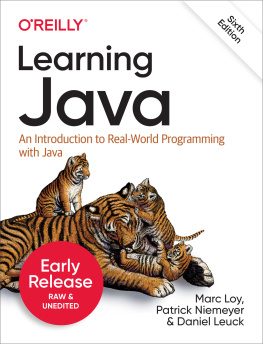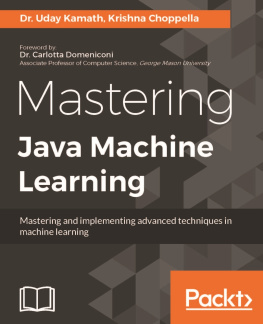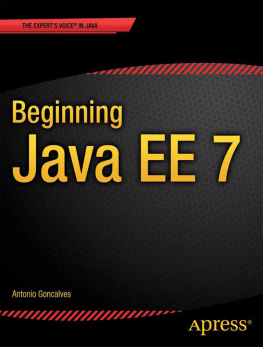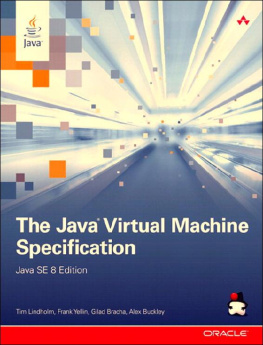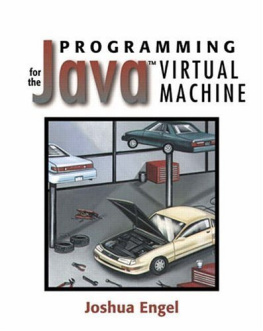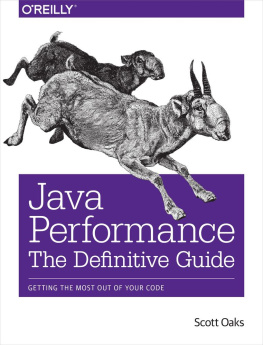About This eBook
ePUB is an open, industry-standard format for eBooks. However, support of ePUB and its many features varies across reading devices and applications. Use your device or app settings to customize the presentation to your liking. Settings that you can customize often include font, font size, single or double column, landscape or portrait mode, and figures that you can click or tap to enlarge. For additional information about the settings and features on your reading device or app, visit the device manufacturers Web site.
Many titles include programming code or configuration examples. To optimize the presentation of these elements, view the eBook in single-column, landscape mode and adjust the font size to the smallest setting. In addition to presenting code and configurations in the reflowable text format, we have included images of the code that mimic the presentation found in the print book; therefore, where the reflowable format may compromise the presentation of the code listing, you will see a Click here to view code image link. Click the link to view the print-fidelity code image. To return to the previous page viewed, click the Back button on your device or app.
The Java Virtual Machine Specification
Java SE 8 Edition
Tim Lindholm
Frank Yellin
Gilad Bracha
Alex Buckley

Upper Saddle River, NJ Boston Indianapolis San Francisco
New York Toronto Montreal London Munich Paris Madrid
Capetown Sydney Tokyo Singapore Mexico City
Copyright 1997, 2014, Oracle and/or its affiliates. All rights reserved.
500 Oracle Parkway, Redwood City, California 94065, U.S.A.
Many of the designations used by manufacturers and sellers to distinguish their products are claimed as trademarks. Where those designations appear in this book, and the publisher was aware of a trademark claim, the designations have been printed with initial capital letters or in all capitals.
Oracle and Java are registered trademarks of Oracle and/or its affiliates. Other names may be trademarks of their respective owners.
The authors and publisher have taken care in the preparation of this book, but make no expressed or implied warranty of any kind and assume no responsibility for errors or omissions. No liability is assumed for incidental or consequential damages in connection with or arising out of the use of the information or programs contained herein.
This document is provided for information purposes only and the contents hereof are subject to change without notice. This document is not warranted to be error-free, nor subject to any other warranties or conditions, whether expressed orally or implied in law, including implied warranties and conditions of merchantability or fitness for a particular purpose. We specifically disclaim any liability with respect to this document and no contractual obligations are formed either directly or indirectly by this document, except as specified in the Limited License Grant herein at , and may otherwise not be reproduced or transmitted in any form or by any means, electronic or mechanical, for any purpose, without our prior written permission.
The publisher offers excellent discounts on this book when ordered in quantity for bulk purchases or special sales, which may include electronic versions and/or custom covers and content particular to your business, training goals, marketing focus, and branding interests. For more information, please contact U.S. Corporate and Government Sales, (800) 382-3419, .
Visit us on the Web: informit.com/aw
Library of Congress Control Number: 2014936247
ISBN-13: 978-0-13-390590-8
ISBN-10: 0-13-390590-X
Printed in the United States of America. This publication is protected by copyright, and permission must be obtained from the publisher prior to any prohibited reproduction, storage in a retrieval system, or transmission in any form or by any means, electronic, mechanical, photocopying, recording, or likewise. To obtain permission to use material from this work, please submit a written request to Pearson Education, Inc., Permissions Department, One Lake Street, Upper Saddle River, New Jersey 07458, or you may fax your request to (201) 236-3290.
The Specification provided herein is provided to you only under the Limited License Grant included herein as .
Text printed in the United States on recycled paper at Edwards Brothers Malloy in Ann Arbor, Michigan. First printing, May 2014.
To Sophia and Susan, in deepest appreciation.
Preface to the Java SE 8 Edition
The Java SE 8 Edition of The Java Virtual Machine Specification incorporates all the changes that have been made to the Java Virtual Machine since the Java SE 7 Edition in 2011. In addition, numerous corrections and clarifications have been made to align with popular implementations of the Java Virtual Machine.
This Edition continues the tradition of specifying the abstract Java Virtual Machine, serving as documentation for a concrete implementation only as a blueprint documents a house. An implementation of the Java Virtual Machine must embody this specification, but is constrained by it only where absolutely necessary.
Notable changes to the Java programming language in Java SE 8 have brought corresponding changes to the Java Virtual Machine. To maximize binary compatibility, it has been desirable to specify default methods directly in the Java Virtual Machine, rather than relying on compiler magic that might not be portable across vendors or product releases, and is certainly not applicable to pre-existing class files. In the context of JSR 335, Lambda Expressions for the Java Programming Language, Dan Smith at Oracle consulted with implementers to determine how best to integrate default methods into the constant pool and method structures, the method and interface method resolution algorithms, and the bytecode instruction set. JSR 335 also introduced private and static methods in interfaces at the class file level; they too have been carefully integrated with interface method resolution.
A theme of Java SE 8 is co-evolution of the Java SE platform libraries with the Java Virtual Machine. A small but useful example is support for method parameter names at run time: storing such names in the class file structure goes hand in hand with offering a standard API to retrieve them (java.lang.reflect.Parameter). This illustrates an interesting development in the class file structure over the years: the First Edition of this specification defined six attributes, of which three were deemed critical to the Java Virtual Machine, while this Java SE 8 Edition defines 23 attributes, of which five are deemed critical to the Java Virtual Machine; that is to say, attributes now exist primarily to support libraries and tools rather than the Java Virtual Machine itself. To help readers understand the class file structure, this specification more clearly documents the role of each attribute and the constraints placed upon it.
Many colleagues in the Java Platform Group at Oracle have provided valuable support to this specification: Mandy Chung, Joe Darcy, Joel Franck, Staffan Friberg, Yuri Gaevsky, Jon Gibbons, Jeannette Hung, Eric McCorkle, Matherey Nunez, Mark Reinhold, John Rose, Georges Saab, Steve Sides, Bernard Traversat, Michel Trudeau, and Mikael Vidstedt. Particular thanks to Dan Heidinga (IBM), Karen Kinnear, Keith McGuigan, and Harold Seigel for their ironclad commitment to compatibility and security in popular Java Virtual Machine implementations.


